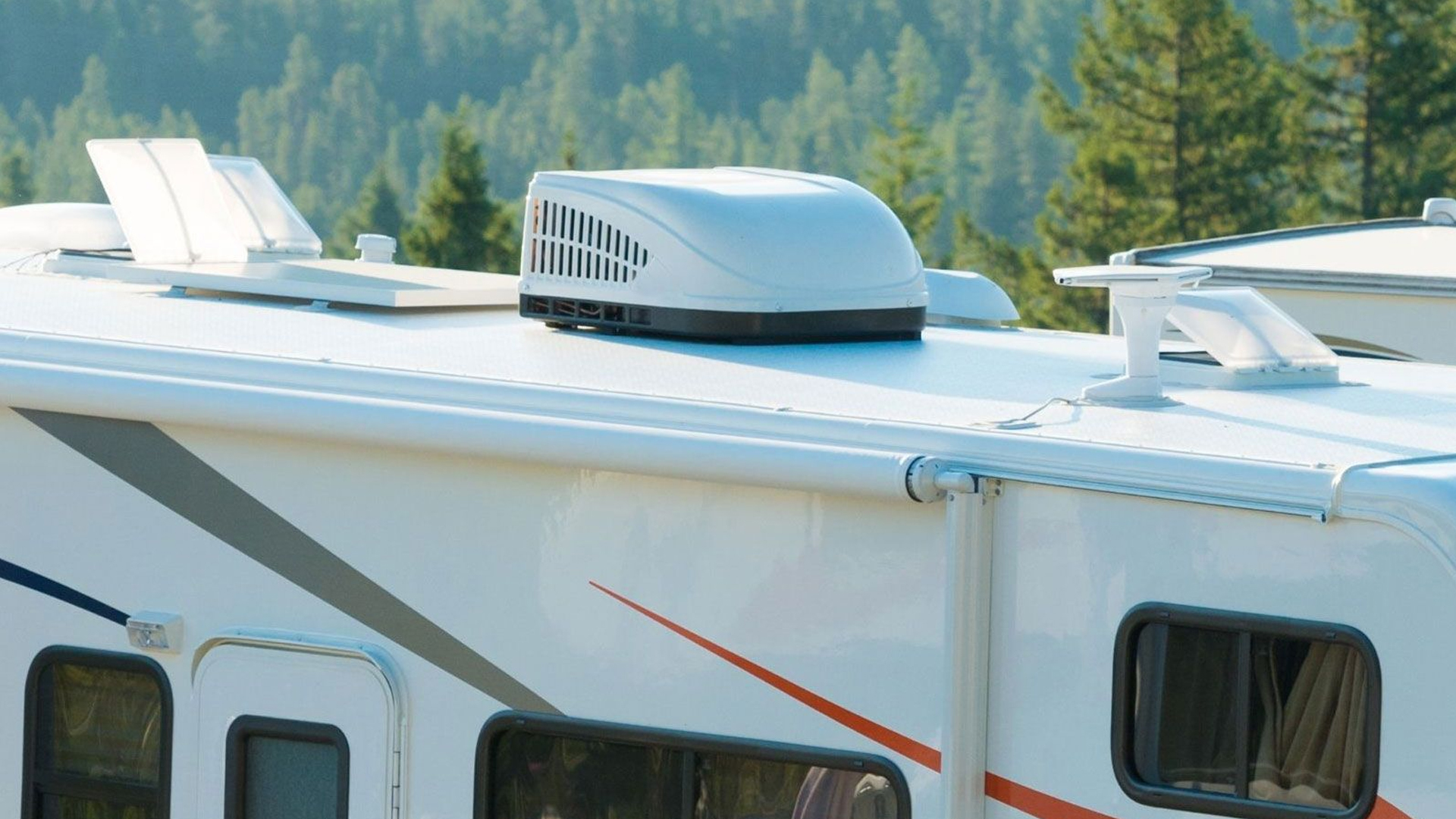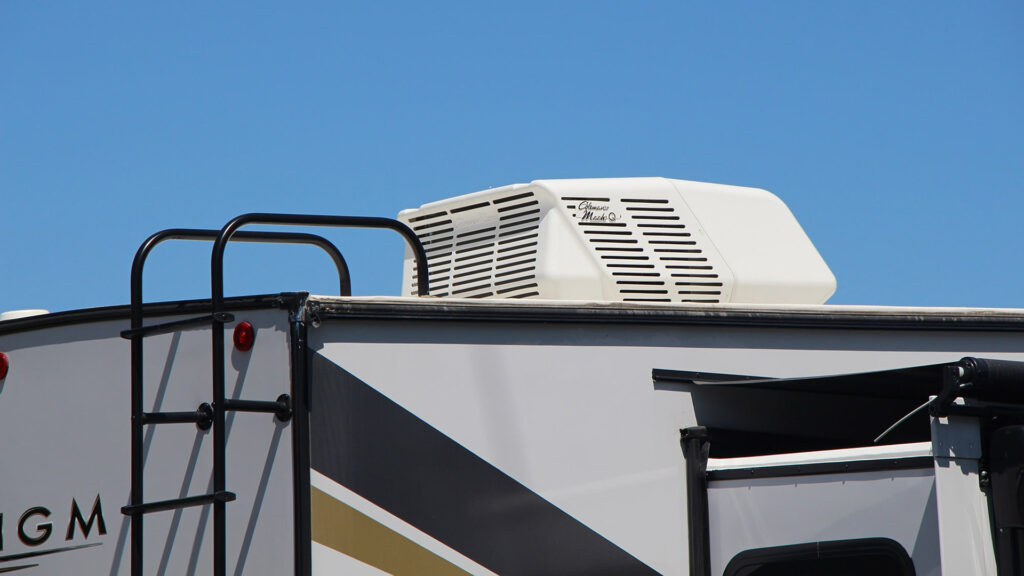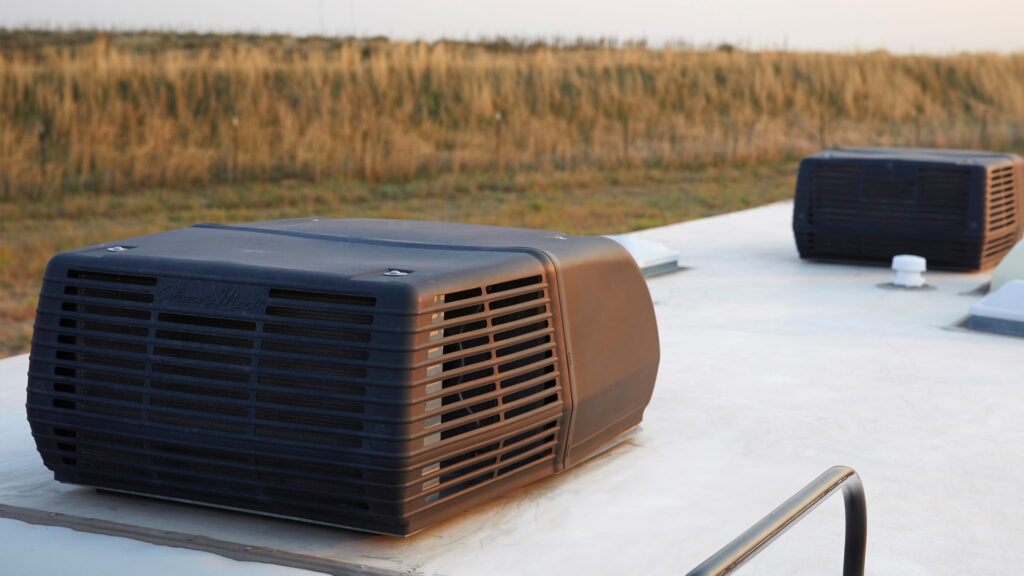
Top 10 Best RV Air Conditioner for Comfortable Travel
Table of contents
- Understanding RV Air Conditioner Types
- Factors to Consider When Choosing an RV Air Conditioner
- Top 10 Best RV Air Conditioners
- 1. Dometic Brisk II Rooftop Air Conditioner
- 2. Coleman Mach 15 Air Conditioner
- 3. Advent ACM150 Rooftop AC Unit
- 4. Furrion CHILL Rooftop AC System
- 5. Atwood Air Command Non-Ducted AC
- 6. Honeywell MN10CESWW Portable AC Unit
- 7. Dometic Penguin II Low-Profile AC
- 8. Black + Decker BPACT10WT Portable Air Conditioner
- 9. Airxcel Mach 8 Plus
- 10. GE Profile PHC08LY Smart Air Conditioner
- Installation and Maintenance Tips
- Adapting to Different Climates
- Energy Efficiency and Power Consumption
- Upgrade Your RV Comfort with Custom Skirting Today!
- Related Articles
When it comes to RV travel, having the best RV air conditioner is essential for ensuring comfort during your journey. Whether you’re exploring hot deserts or humid forests, the right air conditioning system can make all the difference. A reliable best RV AC unit transforms your travel experience by maintaining a pleasant interior temperature, no matter the weather outside. On the other hand, an inefficient system can lead to discomfort and frustration. This guide will help you choose the best AC for RV use by highlighting the top 10 options available and explaining how to select the ideal unit for your needs. RV owners often face challenges like limited space, varying climates, and energy constraints, making the choice of the best RV AC critical. Let’s dive into the details of what to consider and explore the best RV air conditioners available on the market.
Understanding RV Air Conditioner Types
Before we explore the top products, it’s essential to understand the three main types of RV air conditioners:
Rooftop Units
Rooftop units are the most common type of best RV air conditioner. They are mounted on the roof, saving interior space and offering powerful cooling capabilities.
Advantages:
- Efficient cooling for larger spaces.
- Keeps interior space free.
- Can come with heat pump options.
Drawbacks:
- Requires roof installation.
- May increase vehicle height.
Under-Bench Units
Under-bench units are installed inside the RV, usually under seating or storage compartments. These are ideal for smaller RVs or spaces where rooftop installation is not feasible.
Advantages:
- Doesn’t add to the vehicle’s height.
- More discreet installation.
Drawbacks:
- Limited cooling capacity.
- Takes up interior storage space.
Split System Units
Split systems have two parts: one inside and one outside. These systems are less common but offer excellent efficiency and flexibility.
Advantages:
- Quiet operation.
- Flexible placement.
Drawbacks:
- More complex installation.
- Higher cost.
Factors to Consider When Choosing an RV Air Conditioner

Selecting the best RV AC unit involves understanding several factors:
Cooling Capacity (BTUs)
Measured in British Thermal Units (BTUs), cooling capacity determines how effectively the AC can cool your RV by removing heat from the air. Choosing the right BTU rating is crucial for maintaining comfort and energy efficiency. Smaller RVs, such as camper vans or travel trailers, typically require units with 13,500 BTUs, which provide sufficient cooling without overloading your power supply. Larger RVs, like fifth wheels or motorhomes, may need units with 15,000 BTUs or more to effectively cool their increased interior space, especially in hotter climates. Additionally, factors like insulation, outdoor temperature, and window size can influence your AC’s performance, making it essential to match the BTU rating to your RV’s specific needs.
Energy Efficiency (EER Ratings)
Energy Efficiency Ratio (EER) ratings indicate how efficiently an AC uses power. Higher ratings mean lower energy consumption, which is crucial for RVs running on limited power sources.
Noise Levels
The best RV air conditioners minimize noise, ensuring a peaceful environment. Check decibel ratings to gauge a unit’s noise output.
Installation Requirements
Consider whether the unit requires professional installation or if it’s a suitable DIY project. Some rooftop units may demand additional roof support to handle their weight, while others might need modifications to ensure proper sealing and fitment to prevent leaks. Electrical upgrades, such as installing a dedicated circuit or upgrading to a higher amp service, could be necessary to handle the power demands of larger AC units. Additionally, if the unit includes features like heat pumps or multi-zone cooling, these may require more complex wiring and setup. Assess your comfort level with tools and technical tasks, and consult the manufacturer’s installation guide to determine if professional assistance is the best option.
Additional Features
Look for features like built-in heaters, adjustable fan speeds, and smart thermostats to enhance functionality and overall comfort. Built-in heaters are especially useful for year-round travel, providing warmth during colder months without needing a separate heating unit. Adjustable fan speeds allow you to control airflow intensity, offering customized comfort based on weather conditions or personal preferences. Smart thermostats add a modern touch, enabling precise temperature control and energy-saving settings. Some advanced models even offer smartphone integration, allowing you to monitor and adjust the climate remotely. Additional features, like noise reduction technology and energy efficiency modes, can further improve your RV experience by ensuring quiet operation and lower utility costs.
Top 10 Best RV Air Conditioners
Here are the best RV AC units available today, offering a mix of performance, energy efficiency, and innovative features:
1. Dometic Brisk II Rooftop Air Conditioner
- Type: Rooftop
- Cooling Capacity: 13,500 BTUs
- Energy Efficiency: High
- Noise Level: Moderate
- Why It’s Great: Compact design and powerful cooling make this a top pick for small to mid-sized RVs.
2. Coleman Mach 15 Air Conditioner
- Type: Rooftop
- Cooling Capacity: 15,000 BTUs
- Energy Efficiency: Moderate
- Noise Level: Low
- Why It’s Great: Known for durability and high performance, ideal for large RVs.
3. Advent ACM150 Rooftop AC Unit
- Type: Rooftop
- Cooling Capacity: 15,000 BTUs
- Energy Efficiency: High
- Noise Level: Moderate
- Why It’s Great: Affordable and efficient, with a straightforward installation process.
4. Furrion CHILL Rooftop AC System
- Type: Rooftop
- Cooling Capacity: 14,500 BTUs
- Energy Efficiency: High
- Noise Level: Low
- Why It’s Great: Stylish design with energy-saving features and quiet operation.
5. Atwood Air Command Non-Ducted AC
- Type: Rooftop
- Cooling Capacity: 15,000 BTUs
- Energy Efficiency: Moderate
- Noise Level: Low
- Why It’s Great: Dual functionalities for cooling and heating, perfect for year-round travelers.
6. Honeywell MN10CESWW Portable AC Unit
- Type: Portable
- Cooling Capacity: 10,000 BTUs
- Energy Efficiency: High
- Noise Level: Moderate
- Why It’s Great: Compact and versatile, suitable for smaller RVs or supplemental cooling.
7. Dometic Penguin II Low-Profile AC
- Type: Rooftop
- Cooling Capacity: 13,500 BTUs
- Energy Efficiency: High
- Noise Level: Low
- Why It’s Great: Low-profile design reduces wind resistance and is ideal for sleek RVs.
8. Black + Decker BPACT10WT Portable Air Conditioner
- Type: Portable
- Cooling Capacity: 10,000 BTUs
- Energy Efficiency: Moderate
- Noise Level: Low
- Why It’s Great: Lightweight and easy to move, excellent for small spaces.
9. Airxcel Mach 8 Plus
- Type: Rooftop
- Cooling Capacity: 15,000 BTUs
- Energy Efficiency: Moderate
- Noise Level: Moderate
- Why It’s Great: Slim design with robust cooling power, suitable for most RVs.
10. GE Profile PHC08LY Smart Air Conditioner
- Type: Window/Portable
- Cooling Capacity: 8,000 BTUs
- Energy Efficiency: High
- Noise Level: Low
- Why It’s Great: Smart features and compatibility with smaller RVs make it a unique option.
Installation and Maintenance Tips

Proper installation and maintenance ensure your best RV air conditioner performs optimally:
Installation Tips
- DIY Installation: Follow manufacturer instructions carefully. Ensure proper sealing to prevent leaks.
- Professional Installation: For complex setups, hire a professional to avoid complications.
Maintenance Tips
- Regularly clean filters to maintain airflow.
- Check and clean the evaporator and condenser coils annually.
- Inspect seals and connections for leaks or damage.
Adapting to Different Climates
Modern best RV AC units adapt well to various climates. In hot and humid regions, prioritize models with dehumidifying features. For colder climates, opt for units with built-in heating capabilities to maximize comfort year-round.
Energy Efficiency and Power Consumption
Energy efficiency is vital when choosing the best AC for RV use. Look for units with high EER ratings, which indicate lower power consumption and cost savings. Consider models with inverter technology, as these adjust the compressor speed to optimize performance and reduce energy usage.
By selecting the best RV air conditioner for your specific needs, you can transform your travel experience and enjoy every adventure in comfort.
Upgrade Your RV Comfort with Custom Skirting Today!
Ready to maximize the efficiency of your RV air conditioner? Complement your cooling system with our nation’s #1 RV skirting solution. Designed with precision and durability, our custom-fit skirting keeps your RV cool by blocking hot air from circulating underneath, reducing energy consumption and enhancing comfort during your travels.
With our exclusive “No-Snap, No-Gap” channel system, you’ll enjoy unparalleled protection from water, wind, and snow—perfect for all seasons. Plus, our skirting is lightweight, easy to install, and ready to move with you.
🌟 Don’t let the heat slow you down. Boost your cooling system’s performance and travel in comfort with custom RV skirting today!
